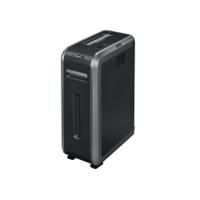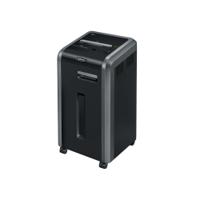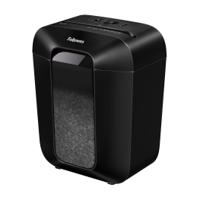Strip Cut Versus Cross Cut
When it comes to document shredding, choosing between strip cut and cross cut shredders is a crucial decision. Both options offer their own unique advantages and considerations in terms of security, efficiency, and convenience. On this page, we will delve into the differences between strip cut and cross cut shredders, exploring their pros and cons to help you make an informed decision.
- Strip cut shredders, also known as ribbon cut shredders, slice documents into long, narrow strips. Here are the key characteristics and considerations:
Pros:
- Faster shredding speed due to the simplicity of the cutting mechanism.
- Typically more affordable compared to cross cut shredders.
- Suitable for basic security needs, such as shredding non-sensitive documents.
Cons:
- Strips may be easier to reassemble compared to cross cut shreds.
- Provides lower security level as compared to cross cut shredders.
- Not recommended for shredding highly confidential or sensitive documents.
- Cross cut shredders, also known as confetti cut or particle cut shredders, produce smaller, confetti-like pieces. Let's explore their features:
Pros:
- Offers a higher level of security by creating smaller and more difficult-to-reassemble paper particles.
- Ideal for shredding confidential and sensitive documents.
- Provides better protection against identity theft and unauthorized access to information.
Cons:
- Shredding process may be slower compared to strip cut shredders due to the additional cutting action.
- Usually more expensive than strip cut shredders.
- Requires more frequent emptying of the shred bin due to the smaller shred size.
Conclusion: Choosing between strip cut and cross cut shredders depends on your specific needs and the level of security required for document disposal. Strip cut shredders offer faster shredding at a lower cost but provide lower security. Cross cut shredders, on the other hand, provide higher security but may be slower and more expensive. Assess your requirements, consider the sensitivity of the documents you handle, and select the shredder that best suits your needs.
Remember, regardless of the shredder type, proper disposal of shredded materials is essential for maintaining confidentiality and protecting sensitive information.
Check out our range of Fellowes strip cut and cross cut shredders below to find the perfect solution for your document shredding needs:
BEST SELLING STRIP CUT SHREDDERS
BEST SELLING CROSS CUT SHREDDERS
Safely disposing of documents is paramount to the continued safety and data protection of your business. Though technology continues to evolve, the world isn’t going paperless any time soon, so it’s imperative you protect your business, students, colleagues, and clients by disposing of all sensitive paperwork in anonymity. For this, office shredders are the perfect solution. The paper shredder uses fine blades that tear through pieces of paper and cut them into ribbons. As they collect in the shredder’s bin they mix with previously shredded documents, and become indistinguishable immediately.
How to unjam a shredder
If your shredder is jammed, you’ve probably put too much paper through it at one time, you’ve shredder something you’re not supposed to (like laminated paper or thick cardboard), or you’ve not taken care of your office shredder by oiling it. Or, the shredder bag might be full and therefore the new paper ribbons have nowhere to go after being torn up.
First, make sure you unplug your shredder to avoid any unfortunate accidents whilst you’re pulling paper out of the teeth. Empty the shredder’s bin; this will solve most minor shredder jams and blockages. If this doesn’t work, try switching it into reverse, and this may push the blocking paper up and out.
If this doesn’t work, however, switch it back to normal and remove the blockage manually. This is why it’s incredibly important to make sure the shredder is unplugged for this step. Extract the trapped paper ribbons with a pair of tweezers, lubricate the blades, set the shredder in reverse, and try to put through a single sheet of paper to test it out. After this, your paper shredder should be unjammed.
What is a cross cut shredder?
A cross cut shredder is a step-up in paper shredding. It cuts the paper into far smaller and finer pieces by using serrated blades that are facing opposite directions to each other, so the paper is literally cut in the motion of a cross. These blades move together to create small, confetti-like pieces of shredded paper, which may be preferable to a regular desk side shredder if you’re dealing with particularly sensitive material.
Do you need to oil a paper shredder?
In short: yes, you need to oil a paper shredder. The constant cutting of the blades can make them dry with the constant motion and paper dust build-up. Oiling and lubricating your office shredder’s blades, or teeth, keeps it working at its optimum and reduces the likelihood of any imminent blockages.
Do I need a shredder?
Any office, business premises, or education centre needs at least one shredder, even if it’s just desk side shredder. If you’re dealing with sensitive documents regularly that contain either your own or someone else’s personal details, then you should absolutely have a shredder in your office.









